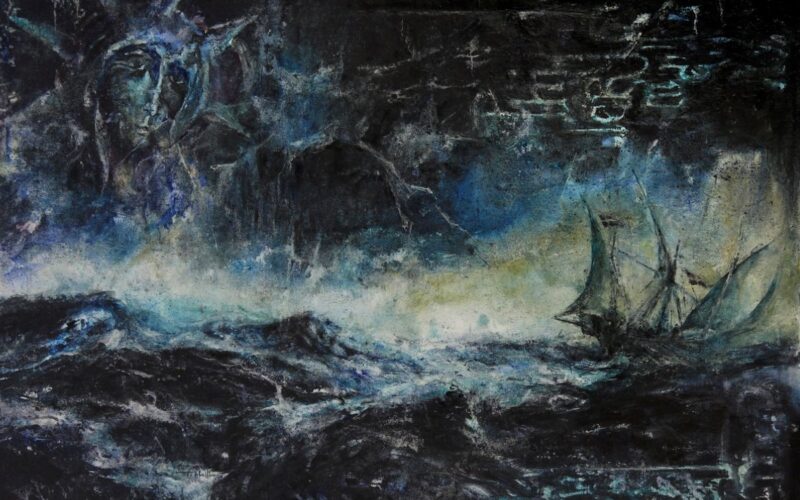With Tuitio Fidei, artist Tonio Mallia returns to the realm of historical imagination with a commanding new body of work that probes the foundations of Maltese identity through the lens of the Great Siege of 1565.
Building on the success and critical resonance of Bellum in Mundum (MUŻA, 2022)—an exhibition that peered into the uncertain future of our planet—Mallia now turns his gaze backwards to the epoch-defining confrontation between the Knights of St John and the vast Ottoman armada, a narrative as enduring as it is mythologised.
Installed within the cavernous Camerone Hall, the exhibition comprises 15 oil paintings. Monumental both in scale and in theme, these works are arranged on freestanding panels that interact with the hall’s architecture, creating an immersive procession of imagery.
In the spirit of Anselm Kiefer’s historical interrogations at Venice’s Palazzo Ducale—an explicit influence cited by the artist—Mallia’s paintings do not merely depict history; they contend with it. Through a fusion of factual detail, artistic allusion, and symbolic resonance, he offers viewers both a commemorative experience and a meditation on the human cost of conflict.
Among the exhibition’s standout works is De Valette. The Grand Master’s face, rendered from a bronze effigy, hangs solemnly above a knight’s banner and the very sword he wielded during the siege—objects both mythic and real, anchoring memory in tangible form. And yet, by foregrounding iconography as all that survives of the Grand Master, Mallia reminds us that this was a man: complex, flawed, mortal. The closed eyes suggest a memento mori underlining the bittersweet ephemeral nature of life.
In Armada, a wide-format canvas unfurls a horizon overtaken with Ottoman sails, interrupted only by the spectre of the Zulfiqar sword—an omen etched into the dusk. La Gardampe, achingly poetic, revisits the moment a mortally wounded knight dragged himself to the chapel of St Anne at Fort St Elmo, a dying ember portrayed by a candle, just snuffed out beneath a spiritual vision offering solace.
The symbolic and spiritual dimensions of the siege are further explored in Baptist, Philerme, and Pikes, which delve into themes of martyrdom, divine intercession, and votive tradition. In Knight, a breast-plated torso is flanked by a crucifix and a sword—symbols of redemption and ruin held in painterly tension. Meanwhile, Silentium conjures the haunting aftermath of St Elmo’s fall under a scorched sky. The crescent moon, that symbolises the once present Ottoman forces, looms silently above a fortress now emptied of life.
Tuitio Fidei—named for the Latin motto of the Knights, “Defence of the Faith”—is an exhibition that invites to solemn reflection. These works do not offer certainty. They dwell in ambiguity—in the emotional states that survive conflict: fear, devotion, endurance, and the quiet urge to understand. What remains is not a narrative, but a presence. A lingering human vulnerability. And the question it leaves behind—not of who they were, but who we are, in the shadow they left behind.
The exhibition runs from 8 August to 21 September at MUŻA, Auberge d’Italie, Merchant Street, Valletta.










